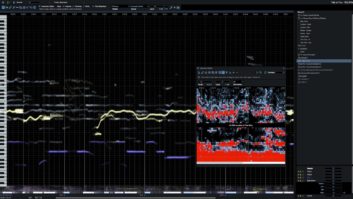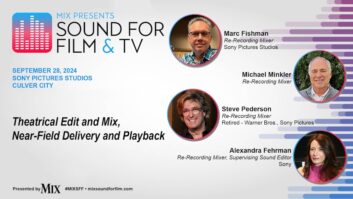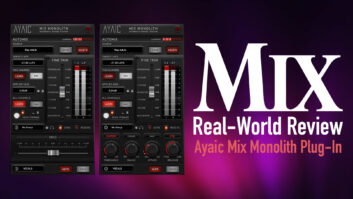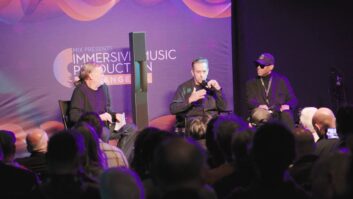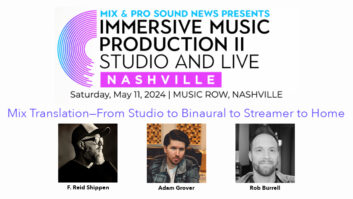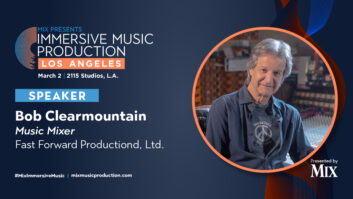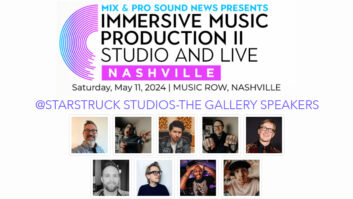Sweating pitchers of margaritas sit on many of the tables in the canteen at Margarita Mix Hollywood, one of Los Angeles’ premier post houses. Margaritas are a given, considering these libations are what the studios are named after. Orange and blue napkins are at the ready, a complement to mugs and saucers in the same shades. It’s all about the details, no matter which Margarita Mix location.
Across town, a stone’s throw past the 10 West Freeway is an oasis that is Margarita Mix Santa Monica. Warm Spanish floor tiles flow in every direction, leading to a friendly and sympathetic receptionist, to an inviting kitchen and a hospitable chef, and to state-of-the-art studio after studio, all mirror images of each other. Everything is arranged around a lush atrium, a sanctuary for Margarita Mix’s clientele.
“It’s not just how you get treated, it’s how you get spoiled here,” states Michele Millard, who came to Margarita Mix Santa Monica when she was in high school and is now the general manager. “When you come to us, it’s the last leg of the project. Making it a great experience for the client is how you get them to come back.”
Margarita Mix Hollywood, often mistaken for a Mexican restaurant from the outside, shares its sister location’s Spanish floor tiles. This is the perfect choice for the Hollywood campus, which, with its Day of the Dead skeleton musicians lining the reception hallways, sugar skull-inspired wall drawings, and whimsically named studios such as Angelita and Bandita, feels like a museum of Central American culture.
Over the hill is LA Studios, the first of Margarita Mix’s three locations, established in 1980 in Studio City. Here, rich green leaf–flecked carpeted walls set the jungle tone for the entire space. It’s all narrow hallways and steep staircases in this expansive warren. Sculptures of tigers and elephants stand nonchalantly in the most unexpected spots. Matrushka dolls decorate the entryway, and a wooden chess table adds a grounding touch in one of the studio’s control rooms.
LA Studios is where it all began with the killer jingle writing team of Sunny Blueskyes and Jim “Bunz” Bredouw. The two did so well, they expanded the studios into the building next door. In the process, they also expanded the services they offered. Jane Curry, the general manager of LA Studios, has been with the company since two years after they opened. She says, “I can’t imagine working anywhere else.”
Curry is not alone. The Margarita Mix staff in all the locations are lifers. Everyone starts from the bottom, learning the business, the way of life, and how to make margaritas—which is at the heart, and the start, of Margarita Mix’s unparalleled hospitality.
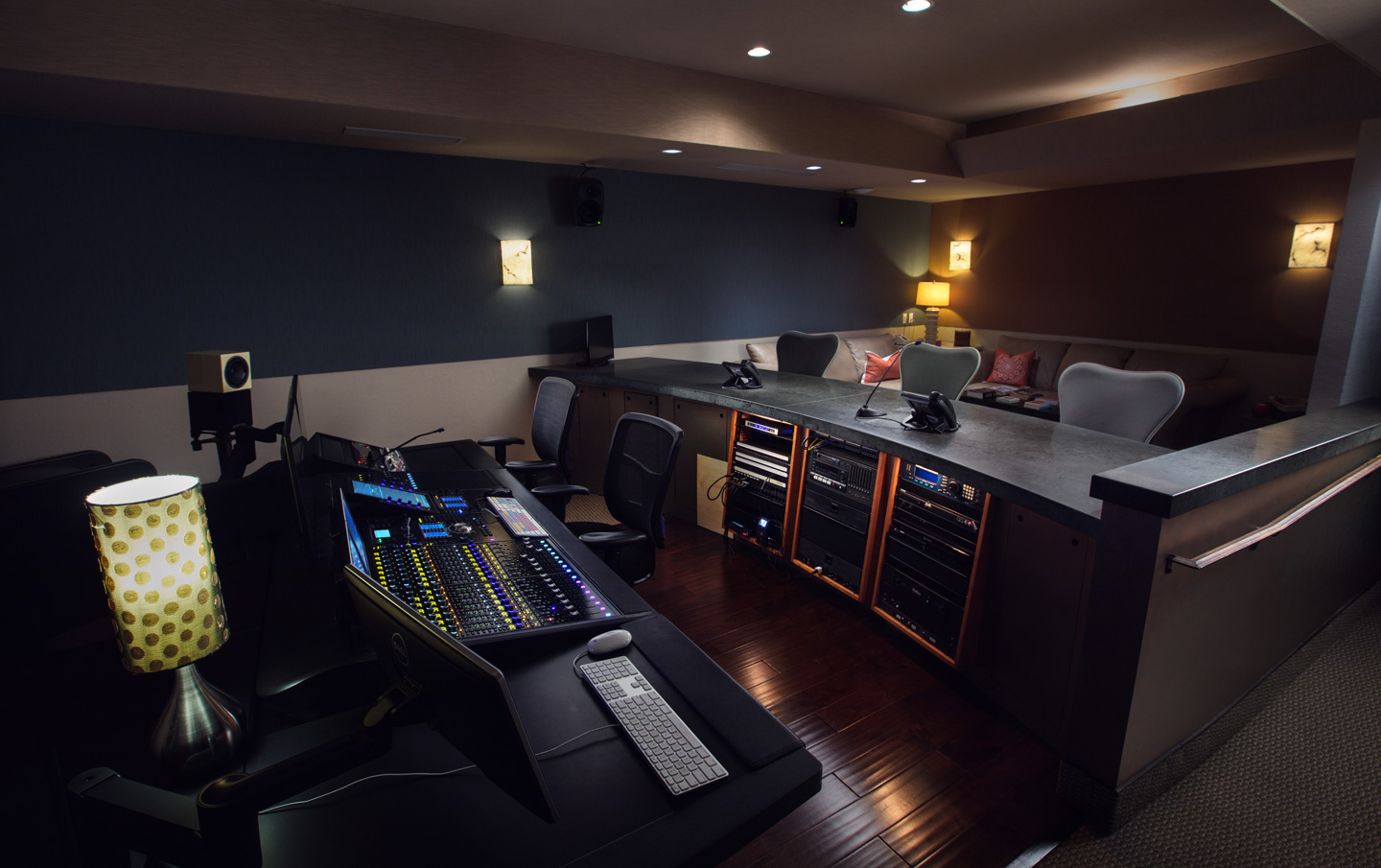
“Let’s say a client comes to the wrong studio,” says Veneta Butler, the general manager of Margarita Mix Hollywood, a fixture at that location for 25 years. “The idea is not to make them get into their car and go to Santa Monica. It’s to call up our sister studio and ask, ‘Can we make it work so the client doesn’t have to drive there?’ You go in our booth here, we connect, they can listen, and they’re happy. If the talent likes where they’re working, they’re going to keep coming back to you.”
This type of teamwork and mutual support makes Margarita Mix the “largest studio west of the Mississippi,” to quote Butler. Each facility may have six or so rooms, but with the sharing of space, resources and staff, they can offer up to 20 studios to clients. This accommodating mindset stems from the family-run attitude that the original owners of LA Studios, Blueskyes and Bredouw, always had. And when they sold their company to another family-run business, Fotokem, in 2010, the cooperative attitude stayed the same.
What has changed is that Fotokem encouraged and allowed all three locations to become even more technologically up-to-date, in a shorter amount of time. As is always the case in the post-production game, products change. With that, the client base changes and the services the post houses provide adjust and evolve accordingly. Margarita Mix’s quick adaptability is one of the key reasons they’ve been around for as long as they have, and continue to thrive.
From Blueskyes’ and Bredouw’s jingle writing to mixing and, later, automatic dialogue replacement, voiceovers, DVD commentary, commercials, trailers, documentaries, sound effects and even color grading, Margarita Mix’s menu has expanded and morphed over the years.
LA Studios is primarily a recording facility, be it for feature or episodic animation, video games or electronic press kits. Surrounded by the big film/TV studios such as Warner Bros. and Universal, it’s easy for clients to pop over to this campus. “It’s not uncommon for someone to call and say, ‘Can we sneak in for a couple of hours to do ADR and produce an animated feature?’” says Curry. “We make it work and we make it easy for them. We have a one-hour minimum rather than the customary four hours, and I’m not charging them an exorbitant fee to work for an hour.”
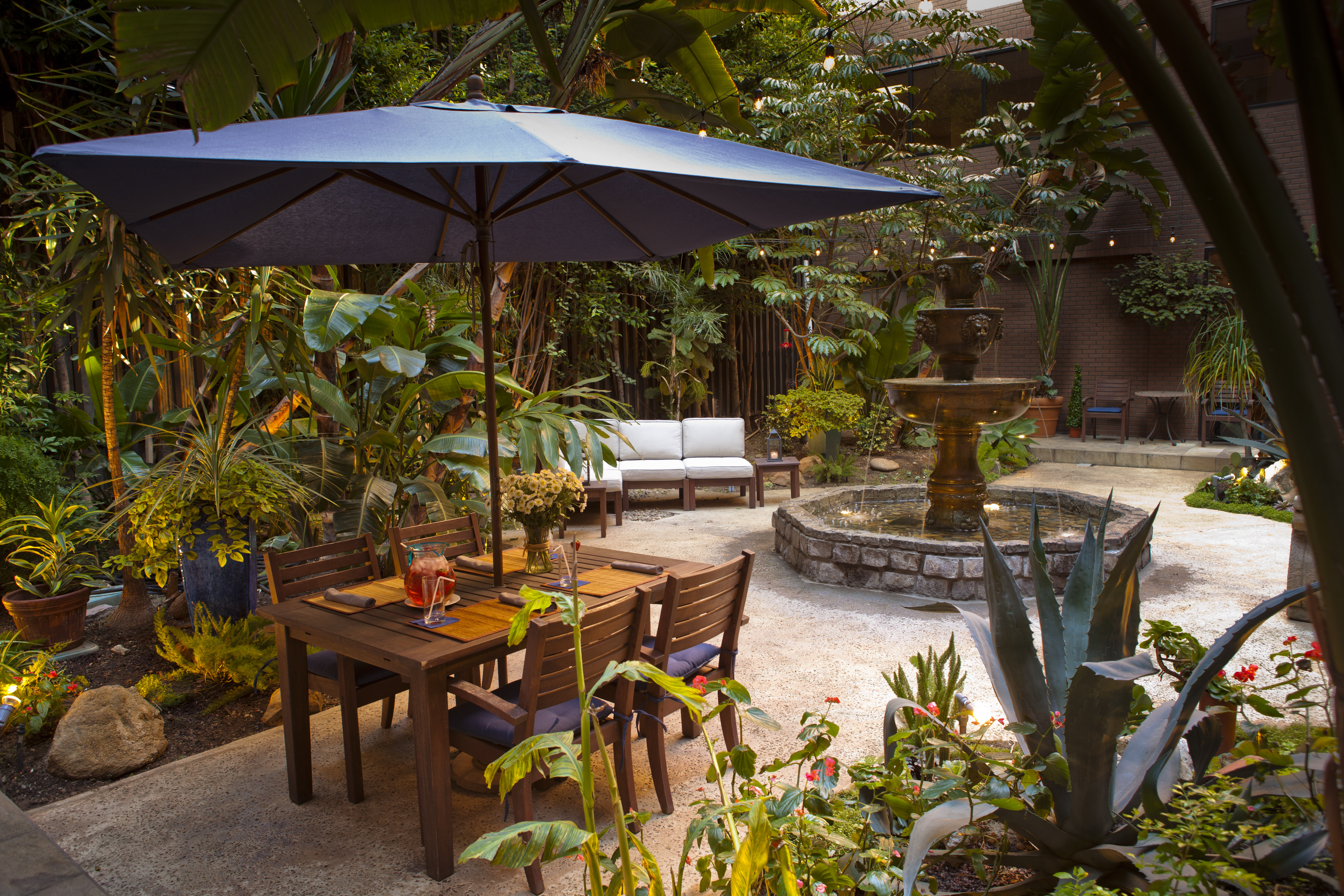
While Santa Monica offers some recording, its focus is on mixing, running the gamut from trailers to DVDs to audiobooks. And they are one of the main go-tos for the advertising industry. “There are ebbs and flows,” says Whitney Morris, an executive producer at the Santa Moica campus who has been there for almost 15 years. “In commercials, for instance, after the Super Bowl, it goes down, then there’s another lull in the summer. But we’re always going because we have all these other systems we’re working, all these other modalities. I always tell clients, new or old, ‘This is the last phone call you will have to make.’ We will take care of the project, price-wise, scheduling-wise, everything.”
“We spent a long time battling the stigma of ‘the elite facility,’” says Millard. “We’re here to work on everything. We want to be part of everything in the industry. We’ve broken out of the stereotype and people know they can reach out to us. Our favorites are always asking for rates lower than what’s listed on the rate card.”
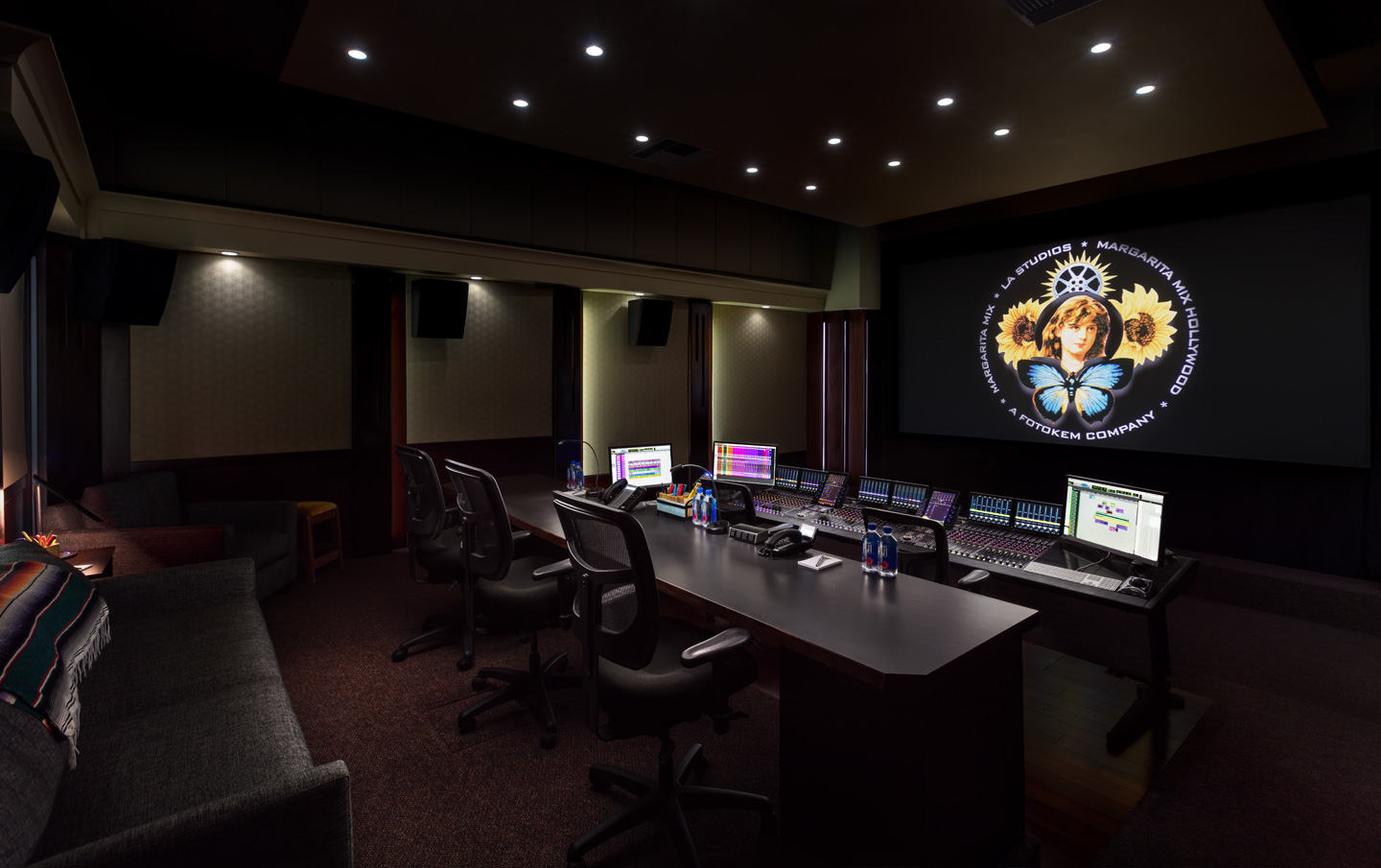
After the Northridge earthquake in 1994 and the collapse of the 10 Freeway, most of the advertising business stayed on the Westside. The Hollywood campus had to reinvent itself and think outside the box. Looking to their neighbors, they found production companies making cartoons and so they got into the animation business. From that they grew sound design services.
Butler has many tools in the Hollywood location, as do her colleagues at the other locations. Since being acquired by Fotokem, these tools have upgraded and multiplied. Fotokem’s intention is to make Margarita Mix even more indispensable, a one-stop shop with top-of-the-line facilities to meet a multitude of needs. If any of the general managers or executive producers has an idea that can enhance Margarita Mix’s services, Fotokem makes that happen.
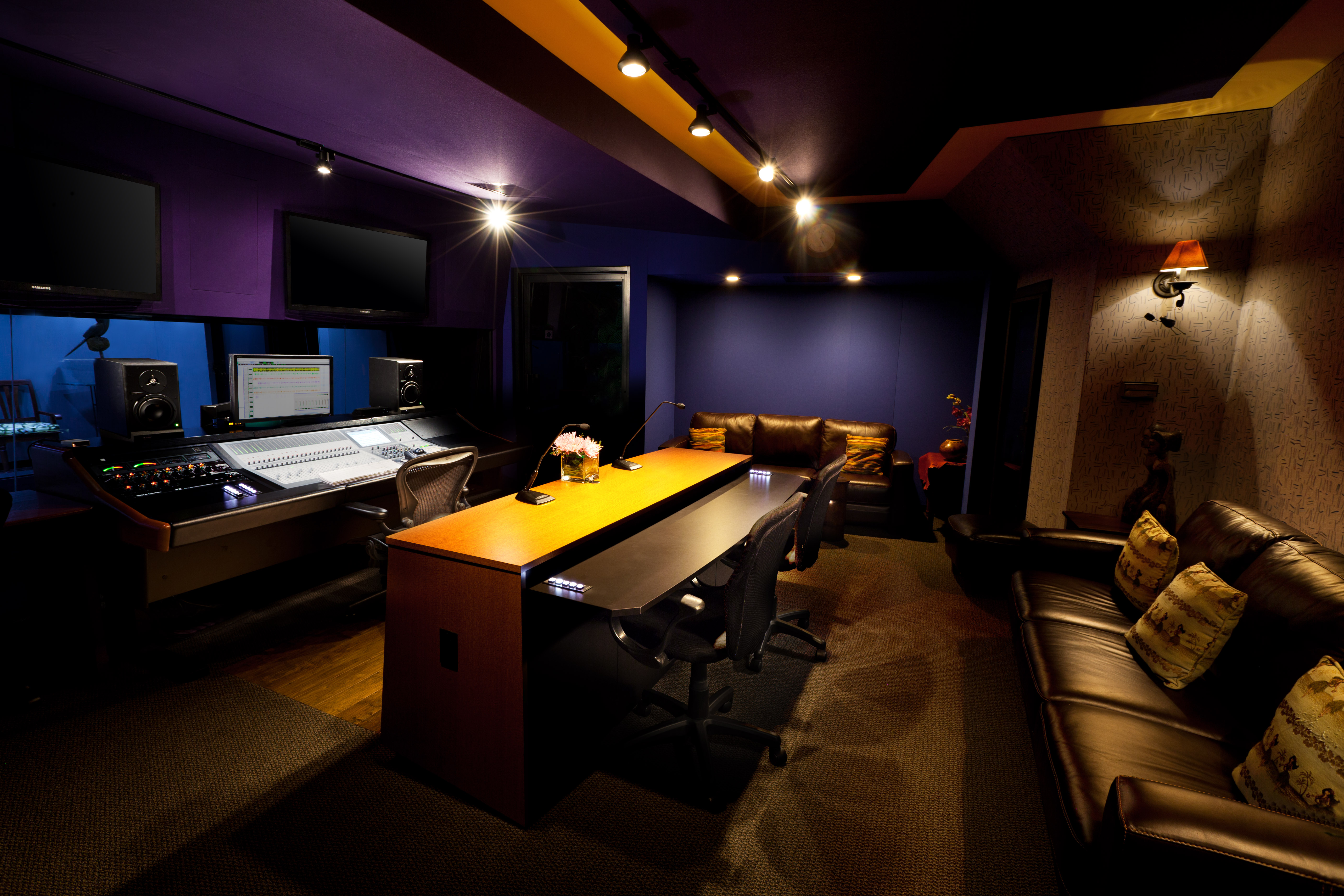
“When an upgrade is needed, Fotokem takes it seriously,” says Millard. “They were branching out and bought us to go after the creative style of work we do. They didn’t set out to change our culture.”
At Hollywood, Nucoda and DaVinci Resolve color grading was brought in. This opened the doors for them to work in reality television where they can provide audio in the form of recording, sound design, editing and mixing, and video with green screens and coloring. “Audio review in the morning, go over for lunch, video review in the afternoon, seamless workflow,” says Butler.
Over at Santa Monica, which was known as the Fairlight studio with specialist engineers on that platform, they made the switch to Pro Tools a few years ago. After speedy training of the seasoned engineers, Santa Monica was in step with not just other post houses, but also their sister facilities, making the sharing of files a lot easier.
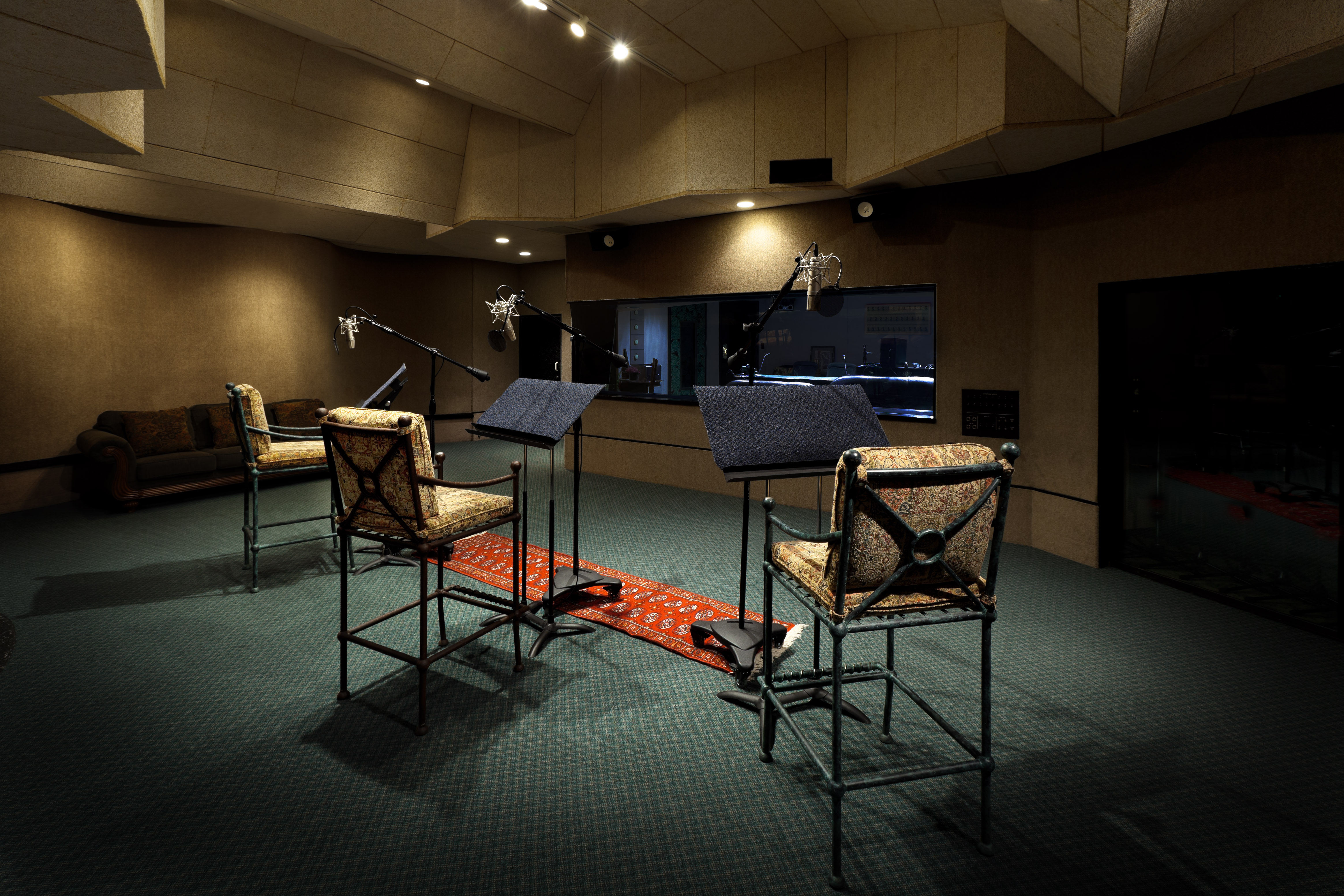
Transcoding was brought to the machine room at LA Studios, and machine room assistants were trained to handle the equipment.
“One of the great things about the facilities is the infrastructure,” says Paula Arnett, also an executive producer at Margarita Mix Santa Monica. “Fotokem goes to great lengths to make it a cohesive working environment at all the different locations. You may be here in the afternoon, but you’re going to be able to work at another facility on the same project at any point. They’re running dark fiber all over town, laid with redundancy so there is security, allowing the facilities to really work in harmony from a technology standpoint.”
The engineers also work harmoniously. The clients may have a favorite they like to work with, but the engineers share clients and tips on how to provide them with the best final product. Each of them is highly skilled in all the services the studios offer, able to smoothly switch between various clients’ needs while maintaining quality levels. This is unusual, particularly since engineers tend to become experts in specific skills.
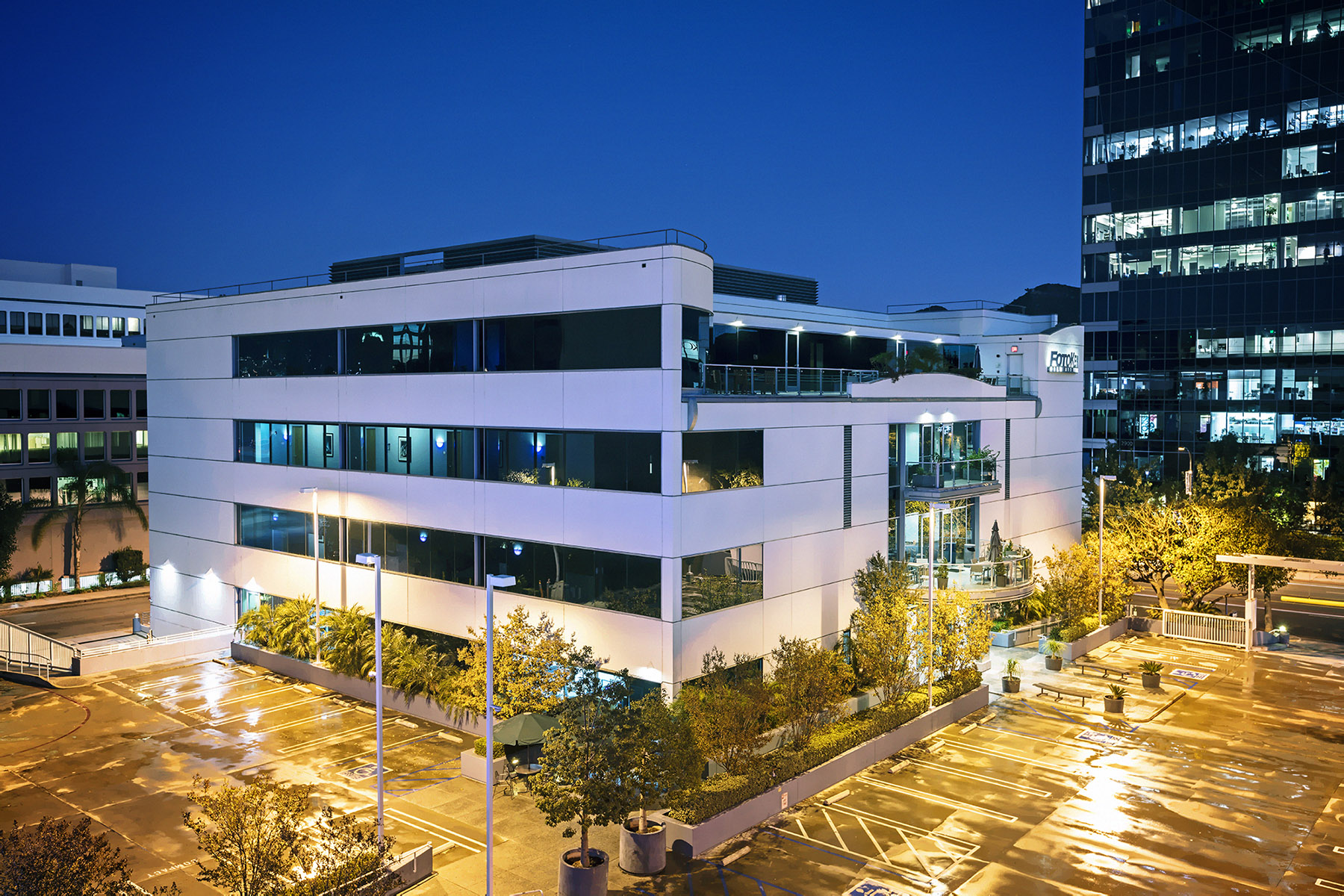
“They don’t get stale in their creativity,” says Morris, referring to the jack-of-all-trades nature of Margarita Mix’s engineers. “It’s fun for them to add sound effects to a commercial, then record voiceover, then mix TV, then a DVD commentary, then an animation record, and at the end of the week, ADR. From the producing side, it’s easier for us to accommodate our clients when our engineers are multitalented.”
Engineers aren’t tied to any one room in any of the studios. As flexible with the environment as they are with their skills, engineers move around easily, setting up with efficiency in any space. This is partially why the rooms at Santa Monica are as similar to each other as they can possibly get, and the rooms in Hollywood and the ones in LA Studios vary depending on what they’re being used for and how many people need to be in them at the same time.
LA’s room have specific characteristics such as the multi-angled ceilings of Studio A or the wraparound width of Studio F, which was once the accounting department. “It was built to be a music room,” Curry says of the former. “The wave pattern of the wall is set up for sound. It has three separate isolation booths, so if you’re recording with someone with a booming voice, you can isolate them so they’re not stepping over anyone else. The music portions of Spinal Tap were filmed there. That room has a lot of history.”
Over in Santa Monica, the studios are floating, making them super-dead sounding. “Most studios aren’t built like this anymore because it’s extremely costly and time-consuming,” says Jeff Levy, one of the mixers/sound designers at Santa Monica. “When we built this place, we stripped the building down to the foundation, then rubber pads were laid down and an inner room was constructed. On top of that a shell is made of eight layers of sheet rock. No screw goes through more than one layer, and every seam is puttied and taped, then dead air. The same thing for the isolation booths. This is all done to isolate us from the outside world. The construction crew referred to these rooms as the bunkers.”
“If you do it right the first time, there’s a high probability you’ll get repeat business,” says Butler. “I’ve had a client say to me, ‘I have a bid that is 60 percent lower than what you quoted me.’ And I said, ‘Chances are, you’re going to be coming to me to fix it.’”
